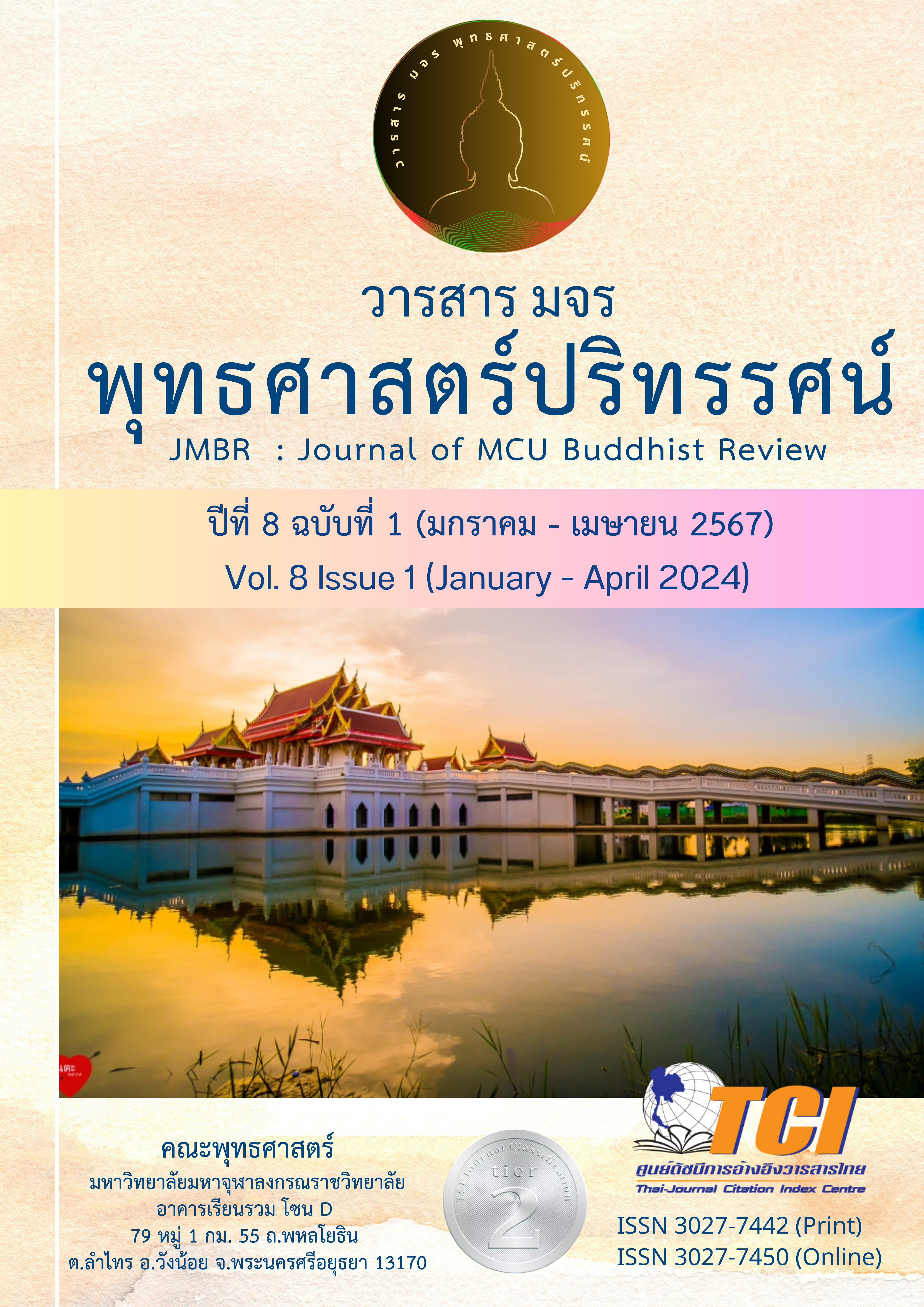Brand Building: Promotion the Local Economic Development of Agricultural Cultural Heritage
Main Article Content
บทคัดย่อ
The objectives of Research article are: 1) To study the relationship between agricultural cultural heritage and regional development. 2) To study innovative ways of agricultural cultural heritage brands with local characteristics. The research area is Luoyang City. Study data from the field and documents from the group of contributors. 25 people analyzed the obtained data according to the objectives and presented the research findings in a descriptive manner. The research results appear as follows. 1) In today's era, there is rapid industrial development in China. Agricultural development has been affected to some extent. Many workers have migrated from rural areas to cities. Cause damage to the ecological environment due to the industry. This damage affects China's agricultural cultural heritage. As a result, there is an urgent need to protect and inherit agricultural cultural heritage. 2) Promotion and dissemination of agricultural cultural heritage. Using packaging design as a starting point Utilizing local cultural features as a guideline for agricultural branding and promote regional economic development through branding. At the same time, it also plays a role in protecting agricultural cultural heritage. In conclusion, this research can be used as a guideline for the future development of products related to agricultural cultural heritage. and has research value for the development of other similar types of agricultural cultural heritage.
Article Details

อนุญาตภายใต้เงื่อนไข Creative Commons Attribution-NonCommercial-NoDerivatives 4.0 International License.
- บทความที่ได้รับการตีพิมพ์เป็นลิขสิทธิ์ของวารสาร มจร พุทธศาสตร์ปริทรรศน์
- ข้อความใดๆ ที่ปรากฎในบทความที่ได้รับการตีพิมพ์ในวารสาร ถือเป็นความรับผิดชอบของผู้เขียนบทความ และข้อคิดเห็นนั้นไม่ถือว่าเป็นทัศนะและความรับผิดชอบของกองบรรณาธิการวารสาร มจร พุทธศาสตร์ปริทรรศน์
เอกสารอ้างอิง
Agricultural Society Proceedings of the 2014 China Modern Agriculture Development Forum. Journal of China Agricultural Science Bulletin. 6(9), 144-146.
Chitmuenwai, W. & Lerrujdumrongku, P. (2022). Stimulating Feelings and Perceptions in The Waste Separation using Media to Create Contemporary Art. Journal of MCU Buddhist Review. 6(3), 167-175.
Ding, Y. & He M. (2022). The Agricultural Cultural Heritage Brand Construction under the Background of Rural Revitalization Southern. Journal Agricultural Machinery. 22(4), 100-102.
Fang, J. et al. (2023). The Construction of Public Brands in the Cultural Heritage Rural Economy and Technology. Agricultural Journal. 18 (1), 142-146.
Fu, Z. & Huang, H. (2021). The role and development strategies of important agricultural cultural heritage in the revitalization of rural areas. Hunan Crop Research. 21(5), 405-408. doi:10.16848/j.cnki.issn.1001-5280.221.05.01
Gu, X. et al. (2022). Progress, Problems, and Countermeasures for the Protection of Agricul- tural Cultural Heritage. Zhejiang Province Zhejiang Agricultural Journal. 22(2), 397-408
Hanchaichana, S. (2002). Qianjiangyuan Region from the Perspective of Agricultural Cultural Heritage. Zhejiang Agricultural Science. 23(03), 2105-2109.
Sun, C. (2019). Innovative utilization of agricultural cultural heritage resources. Journal of Anhui Academia. 19(04), 171-177.
Sun, Z. et al. (2018). Agricultural Intellectual Property and Regional Brands in Wufeng Auto- nomous County of Wulingshan District. Jiangxi Agricultural Journal. 8(1), 142-146.
The terraced fields of Ankang Fengyan, as an agricultural cultural heritage, have been destroyed. Retrieved 30 November 2023 from https://image.baidu.com/10/05/2023.
Wongut, N. & Chaiphibun, S. (2020). Factors Affecting the Success of the Safe Natural Agriculture Community Enterprise Group at Maepan - San Kiang, Mae Chaem District, Chiang Mai Province. Journal of Graduate School, Pitchayatat. 15(3), 110-111.
Wu, M., Zou, A., & Chen, L. (2014). On the Promotion of Rice Fish Symbiosis Technology and the Protection of Agricultural Cultural Heritage - Practical Experience in the Protection and Promotion of the Qingtian Rice Fish Symbiosis System. N.P.: Editorial and Publishing Department of the Chinese.
Xie, X. (2023). Continuously strengthen the brand effect of agricultural cultural heritage sites Agricultural Resources and Regionalization in China. 6(3), 176-185.
Xiong, L. (2023). Exploration of Public Brand Marketing Path for Agricultural Cultural Heritage in Wuling Mountain Area - Taking Anhua Black Tea Public Brand as an Example Northern Economic and Trade. 15(1), 75-78.
Yan, X. & Lai, G. (2021). Overview of Methods for Evaluating the Value of Agricultural Cultural Heritage. Jiangxi Science. 21(3), 506-510.
Zhang, Y. et al. (2017). Japan's experience in protecting and developing agricultural cultural heritage and its inspiration for China World Agriculture. 17(3), 139-142.
Zhang, C. & Wu, L. (2021). China's Important Agricultural Cultural Heritage: Re understand- ding of Connotation, Progress in Protection, and Breakthrough of Difficulties. Journal of Huazhong Agricultural University (Social Sciences Edition). 21(1), 148-155.
Zhang, D. (2023). Protection and Development of Agricultural Cultural Heritage Rural Economy and Technology. Journal Agricultural Machinery. 23(2), 24-25.


